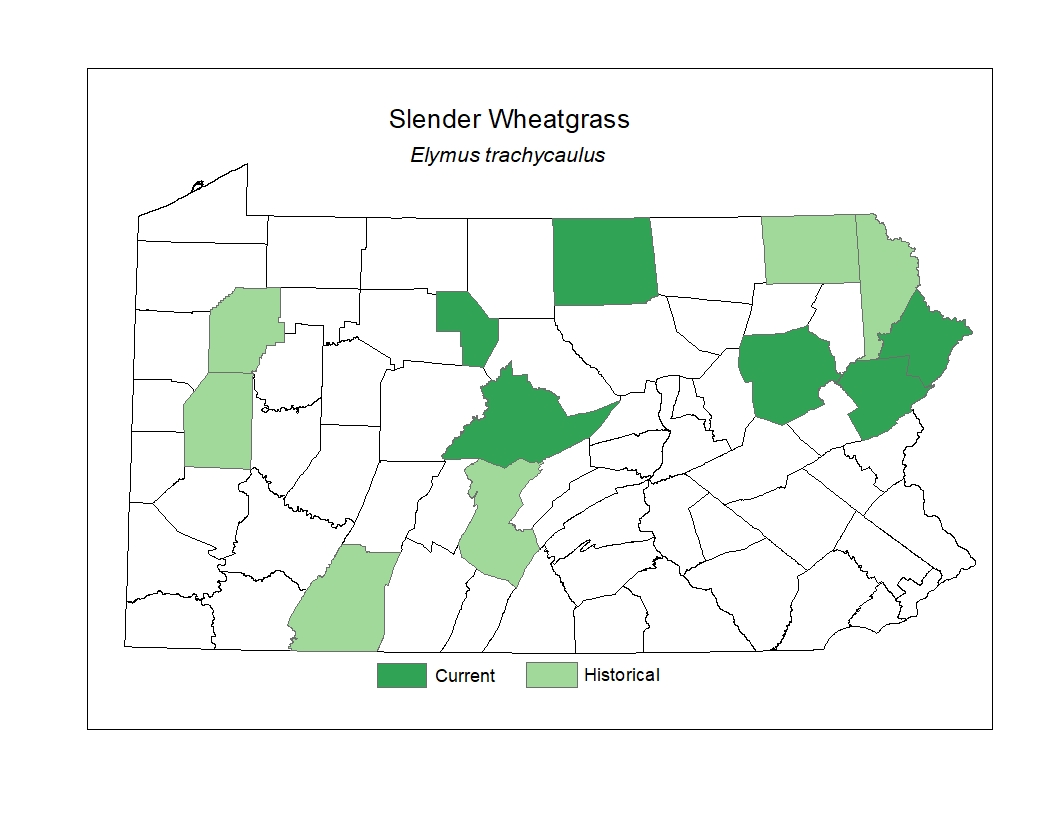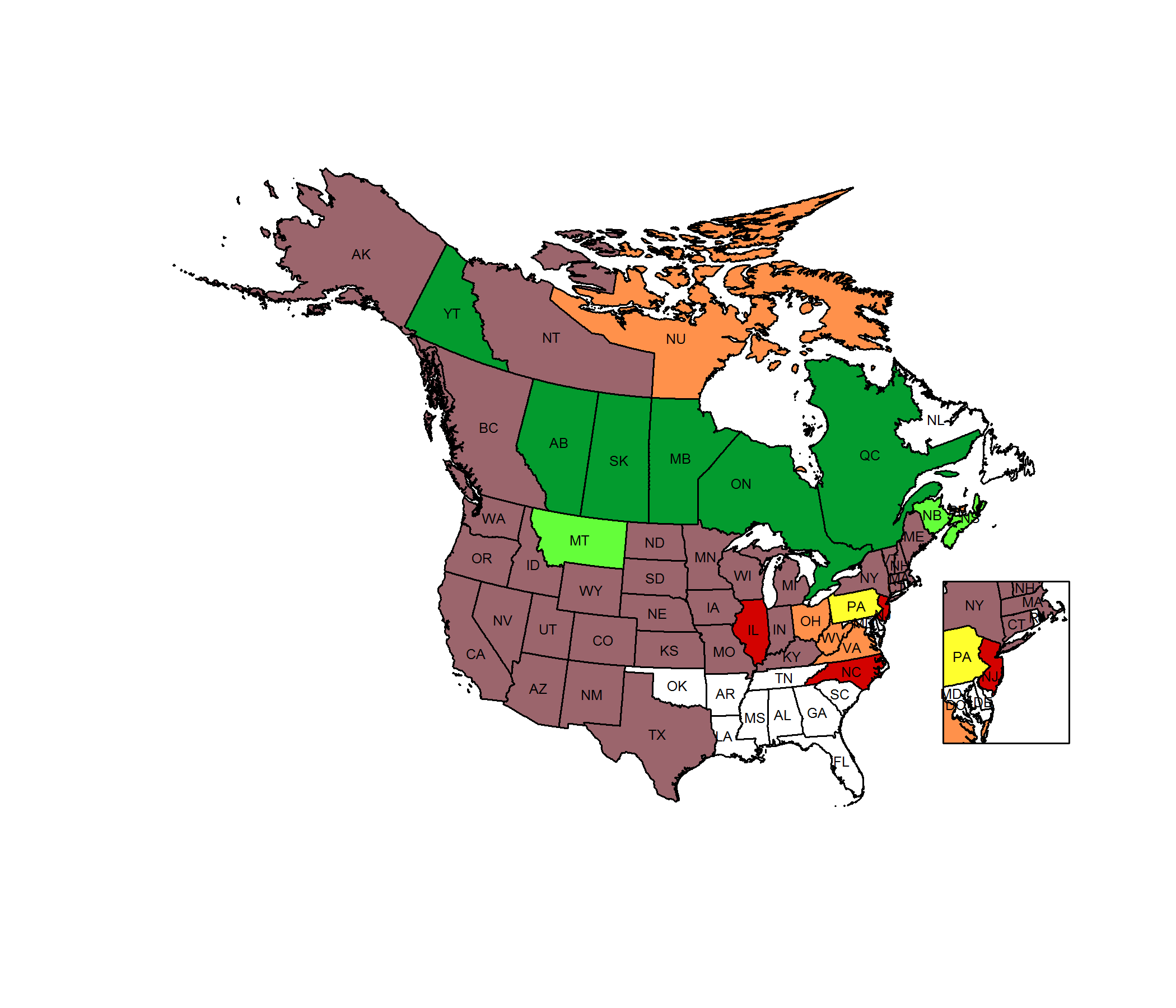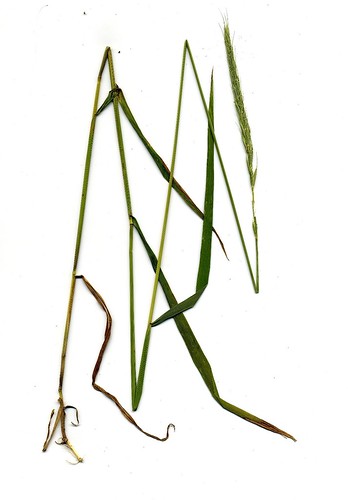 Species Factsheets
Species Factsheets
Elymus trachycaulus
Slender Wheatgrass
State Status: N
PBS Status: Tenatively Undetermined (TU)
Federal Status:
Global Rank: G5
![]() rank interpretation
rank interpretation
State Rank: S3
Description
Slender Wheatgrass is a perennial grass that may grow to 1 m in height. The leaves are alternately arranged, consisting of a basal sheath portion that envelopes the stem and a linear shaped, flattened, and untoothed blade that is 5-13 cm in length, about 7-12 mm in width, and pointed at the tip. The minute flowers, appearing in summer, occur in an elongate and very slender unbranched inflorescence. The inflorescence contains many individual flower-bearing spikelets that occur singly in an alternating arrangement. The lower part of each spikelet, more specifically the scales called glumes, tends to remain attached to the inflorescence after the fruits mature and drop from the plant. This species closely resembles the weedy and exotic species known as quackgrass (Elymus repens), but the latter produces well-developed rhizomes (often forming colonies), has longer anthers, a hairless spikelet axis, and the complete spikelet (including the glumes) falls as one unit at maturity.
Rank Justification
Vulnerable in the nation or state due to a restricted range, relatively few populations (often 80 or fewer), recent and widespread declines, or other factors making it vulnerable to extirpation.
Habitat
It grows primarily in well-drained habitats that receive considerable sun, such as woods borders, rocky banks, grasslands, barrens, thickets, and utility rights-of-way.
Survey Dates
Flowers June - July
Distribution
Slender Wheatgrass has a transcontinental range across North America. In Pennsylvania, it has been documented historically mostly in the northern counties.

Management
The viability of populations of Slender Wheatgrass will require maintaining early successional conditions and controlling invasive species. In some cases, active management, such as periodic mowing or the use of prescribed fire may be needed to create the proper successional stage and ecological conditions for this species to thrive.
Conservation Status Map


NatureServe. 2017. NatureServe Explorer: An online encyclopedia of life [web application]. Version 7.1. NatureServe, Arlington, Virginia. Available https://explorer.natureserve.org.
- NatureServe. 2018. NatureServe Explorer: An online encyclopedia of life [web application]. Version 7.1. NatureServe, Arlington, Virginia. Available at https://www.natureserve.org/explorer
- Pennsylvania Natural Heritage Program. 2018.
- Rhoads, A.F. and W.M. Klein, Jr. 1993. The Vascular Flora of Pennsylvania. American Philosophical Society, Philadelphia, Pennsylvania. Rhoads, A.F. and T.A. Block.
- 2007. The Plants of Pennsylvania: An Illustrated Manual. 2nd edition. University of Pennsylvania Press, Philadelphia, Pennsylvania.







